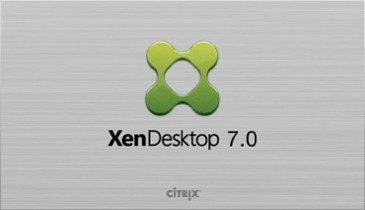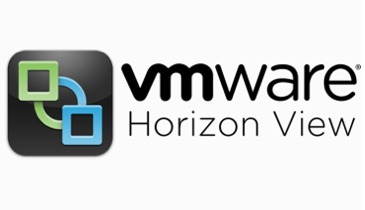【Denmark】
When computers were first being developed it was pretty common for each individual user to not have Denmarktheir own PC at their desk like they do today. Instead, there was a central mainframe that had all of the computing power that users accessed through what is called a thin client. Thin clients themselves have little to no computing power by themselves, but simply work as a way for a user to access the central mainframe. However, as hardware became faster, cheaper, and smaller, thin clients largely gave way to individual PCs that each user had sitting at their desk.

Interestingly, in some demographics there is currently a push to remove individual PCs and go back to using a variation of thin clients powered by a central server. The difference between the original method and the modern one is that the modern one works by providing the user with a virtual desktop that is intended to be nearly indistinguishable from a physical desktop. So even though the user just has a little thin client, it appears to them like they have the full power of a local PC. This method is currently being called Virtual Desktop Infrastructure or VDI for short.
Editor's Note:Guest author Matt Bach is the head of Puget Labs and has been part of Puget Systems, a boutique builder of gaming and workstation PCs, since the early days working in various subsets of production. This article was originally published on the Puget blog.
VDIs are an incredibly complex topic once you get into the fine details so we will largely be avoiding the in-depth technicalities of virtual desktops and instead focus on the basics of the technology and our experiences while using it.
In this article we will first discuss the major VDI solutions that are currently available and how Nvidia GRID works to add GPU acceleration to a VDI. Then, we will look at some of the more common advantages and disadvantages of virtual desktops. Finally, we want to give our general impressions on setting up and using virtual desktops for a variety of uses and make some educated guesses as to whether virtual desktops truly are the future of computing or if they will likely remain a niche technology.
Desktop Virtualization Solutions
There are many different ways to create and access a virtual desktop ranging from simply having a virtual machine with remote desktop capabilities to full desktop virtualization and streaming solutions like Citrix XenDeskop and VMWare Horizon View. Since each method is designed for slightly different applications, each method has its own unique advantages and disadvantages.
If you simply need to access a handful of virtual machines and do not need GPU acceleration then using a free solution like Microsoft Remote Desktop or TightVNC may work just fine. These options are largely free, require very little network infrastructure, and are easy to setup. You simply install your software of choice on the client and host machines and use it to connect the client machine to the host machine. The main downsides to using something like this is that you have no power control over the host machine (you can turn it off, but can't turn it back on easily), most solutions do not support GPU acceleration, it requires a full PC as the client machine, and it is not very easy to manage if you are handling a large number of users and machines since you have to manually maintain as many virtual desktops as you have users.
If you need GPU acceleration or have a large number of users, paid solutions like Citrix XenDesktop or VMWare Horizon are likely what you want. Both support multiple kinds of desktop virtualization from simple remote desktop (with power control and GPU acceleration) or using a master image that a virtual desktop can use as its base image each time it is booted.
The advantage of using a master image mostly comes into play when you have a large number of users since you only need to maintain a single OS rather than dozens or even hundreds of them. In addition, through the use of Active Directory you can make it so that it does not matter which virtual desktop a user logs into which means you only need as many virtual desktops as you have active users at one time rather than a separate desktop for each and every user.


Citrix XenDesktop and VMWare Horizon are currently the top two VDI solutions available
However, be aware that both XenDesktop and Horizon require special licensing and a decent amount of infrastructure. In addition to the client machines and virtual desktops, you also need at least two servers for Active Directory, DNS, SQL, and the Desktop Delivery Controller (XenDesktop or Horizon View) and all the licenses that go along with them.
Nvidia Grid for Virtual GPU Acceleration
GRID is the name of a group of video cards offered by Nvidia that are designed exclusively for use in virtualized environments. When it comes to virtualization, you can't simply put any normal video card into a server and expect it to work. First, it has to support virtualization (most often VT-D) which right away eliminates GeForce video cards. Second, it has to be able to operate properly without a monitor attached. While most Quadro cards are designed to be able to do this with proper driver support, Nvidia GRID cards are specifically made to operate without a physical monitor. In fact, they don't have any video outputs at all!
Nvidia GRID cards are also unique in that every card actually has multiple GPUs on it. This has been done before on cards like the Geforce GTX 690 and the newer GeForce GTX Titan-Z, but those are designed for the two GPUs to be used at the same time in SLI. Nvidia GRID, on the other hand, is designed for each GPU to be used individually by entirely different users.
Search
Categories
Latest Posts
Why there's no such thing as being 'very online' anymore
2025-06-27 07:04Enhance and Upscale: FSR 2.2 vs DLSS 2.4 Analysis
2025-06-27 06:06This Indian city wants its roads fully watched by CCTV and drones
2025-06-27 06:05Donald Trump talked about space and Buzz Aldrin's face says it all
2025-06-27 06:04Popular Posts
Video Games Are Better The Second Time You Play Them
2025-06-27 07:47Nintendo Switch pre
2025-06-27 06:23After 'Scalebound,' what's ahead for Xbox One exclusives?
2025-06-27 06:21Packers vs. Eagles 2025: How to watch NFL online
2025-06-27 06:07Featured Posts
How to unblock Pornhub for free in Alabama
2025-06-27 07:49Welcome to the jazzy 'Bad and Boujee' remix the internet has needed
2025-06-27 07:10Kendall Jenner firmly denies 'upsetting' plastic surgery rumors
2025-06-27 07:03The Portable Workstation: Dell XPS 13 + 32 UltraSharp 4K Monitor
2025-06-27 06:08Popular Articles
Vizio 43" smart TV deal: Save 41% at Walmart
2025-06-27 06:53After 'Scalebound,' what's ahead for Xbox One exclusives?
2025-06-27 06:34These ski resorts are closed because there's just too much snow
2025-06-27 06:25Best MacBook deal: Save $200 on 2024 M3 MacBook Air
2025-06-27 05:45Newsletter
Subscribe to our newsletter for the latest updates.
Comments (7791)
Co-creation Information Network
Lions vs. Commanders 2025 livestream: Watch NFL Playoffs for free
2025-06-27 07:38Ignition Information Network
Exclusive: E. Lockhart to publish a new YA novel
2025-06-27 07:00Habit Information Network
Donald Trump's chilling message to media: You're with me or you're against me
2025-06-27 06:56Dream Information Network
Prince William opens up about losing his mother almost 20 years ago
2025-06-27 05:37Upward Information Network
CES 2025: 7 AI
2025-06-27 05:29